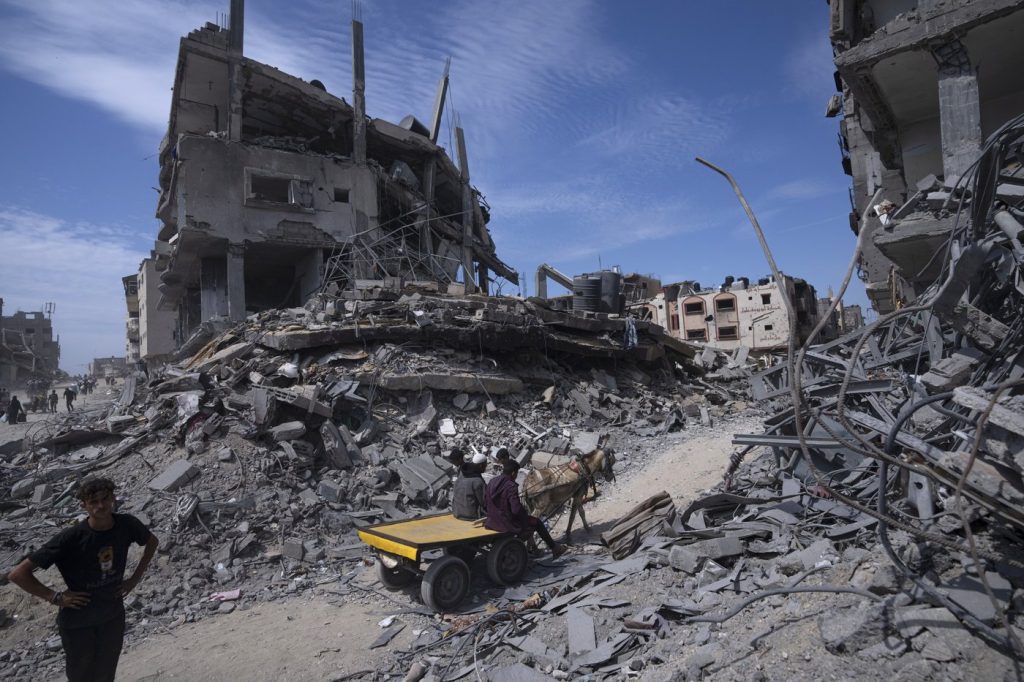In the Gaza Strip, Palestinians are desperate to leave the makeshift tent camps and return to their homes, contingent on a ceasefire agreement holding in the ongoing Israel-Hamas war. However, many are faced with the grim reality that their homes are either destroyed or irreparable. Israeli airstrikes and ground operations have devastated entire neighborhoods across several cities, leaving behind rubble-strewn wastelands, ruined roads, and collapsed infrastructure, including critical water and electricity systems. Most hospitals have ceased to function, significantly worsening the humanitarian crisis.
The prospect of rebuilding Gaza remains uncertain, particularly as U.S. President Donald Trump has proposed that displaced Palestinians be permanently resettled outside of the conflict-ridden territory, suggesting a potential shift in ownership of Gaza to the United States. Additionally, the recent ceasefire agreement, which includes the release of hostages held by Hamas, fails to clarify who will govern Gaza in the post-war period. There are also concerns regarding the lifting of the blockade imposed by Israel and Egypt, which has severely restricted the movement of people and goods since Hamas took control in 2007.
The United Nations estimates that rebuilding the Gaza Strip could take more than 350 years if the blockade continues. Satellite data from the UN indicates that approximately 69% of Gaza's structures have been damaged or destroyed, equating to over 245,000 homes lost. The World Bank has estimated a staggering $18.5 billion in damage due to the war's initial months, a figure nearly equal to the combined gross economic output of the West Bank and Gaza in 2022.
Israel, which blames Hamas for the destruction that spiraled into the conflict, cites the militant group's October 7, 2023, attack that led to around 1,200 casualties in Israel. In retaliation, Israeli military actions in Gaza have reportedly resulted in over 47,000 Palestinian deaths, with more than half being women and children, according to Gaza's Health Ministry. In contrast, Israel claims it has killed more than 17,000 militants, though evidence remains unprovided, and has shown footage of Hamas utilizing civilian areas for military operations.
Before the rebuilding process can commence, an immense amount of rubble must be cleared—a monumental task, as the U.N. estimates that the war left over 50 million tons of debris. The clearance will require massive resources and time, with current efforts indicating that even with 100 trucks working continuously, it would take over 15 years to clear the rubble, which is further complicated by the presence of unexploded ordnance and human remains. Thousands of people reportedly remain entombed beneath the debris, pointing to the horrifying human cost of the conflict.
The reconstruction initiative outlined in the ceasefire agreement anticipates a three- to five-year project that could begin once all hostages are released and Israeli forces withdraw. However, meaningful progress hinges on reaching a consensus for a second, more complex phase of the agreement, as well as addressing the conditions imposed by the blockade. Critics argue that the blockade amounts to collective punishment and hinder attempts to stabilize the territory.
While international stakeholders push for the revival of the Palestinian Authority to govern both the West Bank and Gaza, Israel shows resistance to the notion of a Palestinian state and the role of the authority in Gaza after the war. This leaves the future of governance in the region ambiguous, while potential international investments in reconstruction are doubtful in an area with a history of repeated conflict. The situation raises fears that the ever-expanding tent camps for displaced Palestinians could become a long-term reality for those affected by the war in Gaza.










